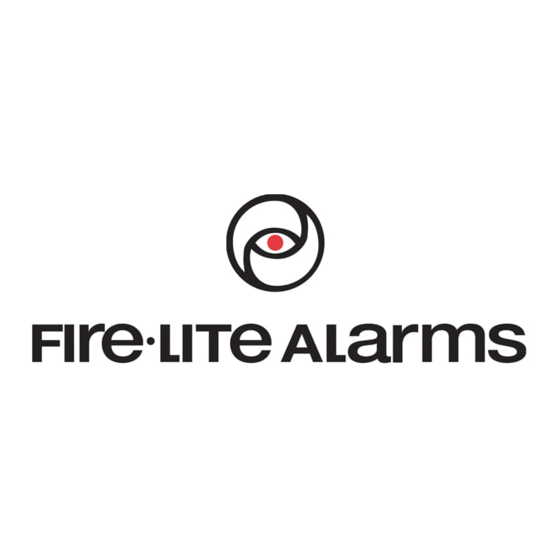
Advertisement
GENERAL
The System Sensor 400 Series plug-in ionization smoke de-
tectors respond quickly to both fast flaming and slow smolder-
ing fires as required by UL 268. Unipolar dual chamber sen-
sor has the sensitivity needed to quickly detect smoke, and
the stability needed to avoid false alarms.
FEATURES
• Unique dual unipolar sensor:
— Provides exceptional stability.
— Factory preset at 1.9% nominal sensitivity.
— Stable operation up to 1,200 feet per minute (6 meters
per second) air velocities.
• Removable cover for field cleaning.
• Two visible LEDs “blink” in standby.
• Sealed against dirt, insects, and back pressure.
• Three-year limited warranty.
• Field metering of detector sensitivity.
• Built-in test switch.
• Low standby current.
• Built-in tamper-resistant feature.
• Designed for direct surface or electrical box mounting.
• 360° field viewing angle of the visual alarm LEDs.
• Insect-resistant screening (0.020"/0.508 mm openings).
• Easy plug-in of the head to base.
• SEMS screws for easy wiring.
• Optional recess mounting.
• Field-adjustable sensitivity.
APPLICATIONS
Use to contribute to life safety, fire protection, and property
conservation. Superior to photoelectric detectors in detecting
fast-flaming fires. Superior to bipolar detectors in avoiding
false alarms.
CONSTRUCTION & OPERATION
All 400 Series plug-in ionization smoke detectors contain a
unique dual-source, dual unipolar chamber detection design
which will sense the presence of smoke particles produced by
fast combustion as well as slow smoldering fires. Additional
key features include a blinking LED standby status indicator,
an easily visible alarm indication, and provision for convenient
field test and metering.
The back of the detector is sealed to block back-pressure air
flow. The chamber is protected by a fine mesh (0.020"/0.508
mm) screen to minimize problems with dust, dirt, and insects.
If cleaning is required, it is easy to remove the cover (with a
special tool) and obtain access to the screen and chamber to
perform a thorough cleaning.
INSTALLATION
Model 1451 detectors are intended for use with Fire•Lite UL-
listed control panels. Maximum number of detectors per zone
This document is not intended to be used for installation purposes. We try to keep our
product information up-to-date and accurate. We cannot cover all specific applications or
anticipate all requirements. All specifications are subject to change without notice. For
more information, contact
Phone: (203) 484-7161 FAX: (203) 484-7118
12 Clintonville Road, Northford, Connecticut 06472
June 19, 1998
1451
2-Wire and 4-Wire
Ionization Smoke Detector
Section: Conventional Initiating Devices
S911
CS308
1202-88-SA
1451
is listed in the installation manual for each control panel. Easy
to install and maintain, this detector is designed for direct sur-
face mounting (using one of the B400 Series bases listed be-
low. Easy-to-wire screw terminals allow fast and simple field
wiring of IN, OUT, and remote annunciator connections.
Consult Fire•Lite control panel specifications for the maximum
allowable loop resistance for the particular control panel to be
used.
To prevent wiring mistakes, observe polarities and make cer-
tain that each conductor is identifiable. A copy of Installation
and Maintenance Instructions is packaged with each detector.
For further information, refer to NFPA 72 “Standard on Auto-
matic Fire Detectors.”
A
2 of this document.
gent on base and wire size. Refer to National Electrical Code
or local applicable codes for appropriate recommendations.
Bases B401 and B401B can utilize a single-gang, 3-1/2" (88.9
mm) octagonal, 4" (101.6 mm) octagonal, or 4" square junc-
tion box. Bases B402B and B406B can utilize a single-gang,
3-1/2" octagonal, 4" octagonal, 4" square, 50 mm, 60 mm, or
75 mm junction box. Base B404B can utilize a 4" octagonal
or 4" square junction box.
Engineering and Manufacturing
Quality System Certified to
International Standard ISO-9001
F-555
California
State Fire
Marshal
7271-1209:126
0Q1A0.AY
is included on page
Box depth is contin-
Made in the U.S.A.
DF-50475 — Page 1 of 2
Advertisement
Table of Contents

Subscribe to Our Youtube Channel
Summary of Contents for Fire-Lite 1451
- Page 1 INSTALLATION 3-1/2" octagonal, 4" octagonal, 4" square, 50 mm, 60 mm, or Model 1451 detectors are intended for use with Fire•Lite UL- 75 mm junction box. Base B404B can utilize a 4" octagonal listed control panels. Maximum number of detectors per zone or 4"...
- Page 2 GENERAL SPECIFICATIONS mounting base dependent (see chart below). 120 micro amps. 1.9% nominal. 0.6 pounds (272 grams). 3.2" (81.28 mm) high; 4.0" (101.6 mm) diameter with unflanged bases, or 6.2" (157.48 mm) diameter with flanged bases. Flame-retardant white Noryl® plastic. 32°F to 120°F (0°C to 49°C).


Need help?
Do you have a question about the 1451 and is the answer not in the manual?
Questions and answers